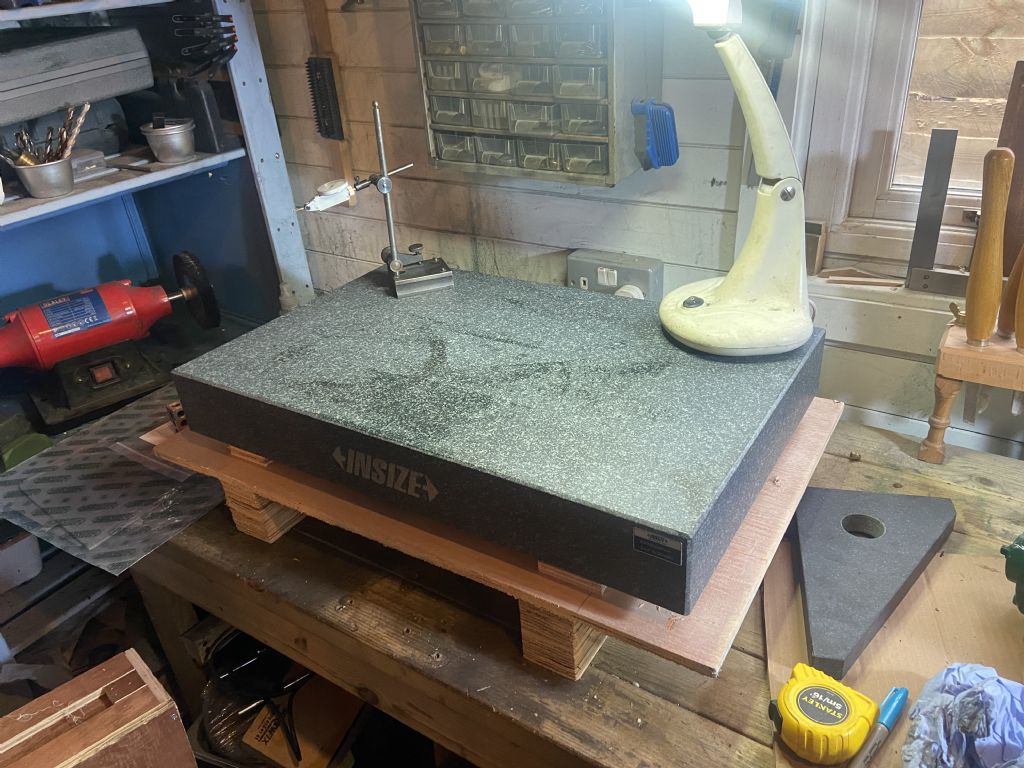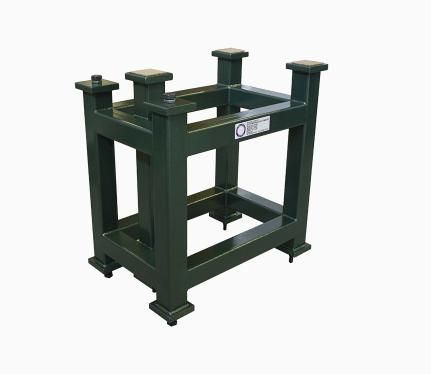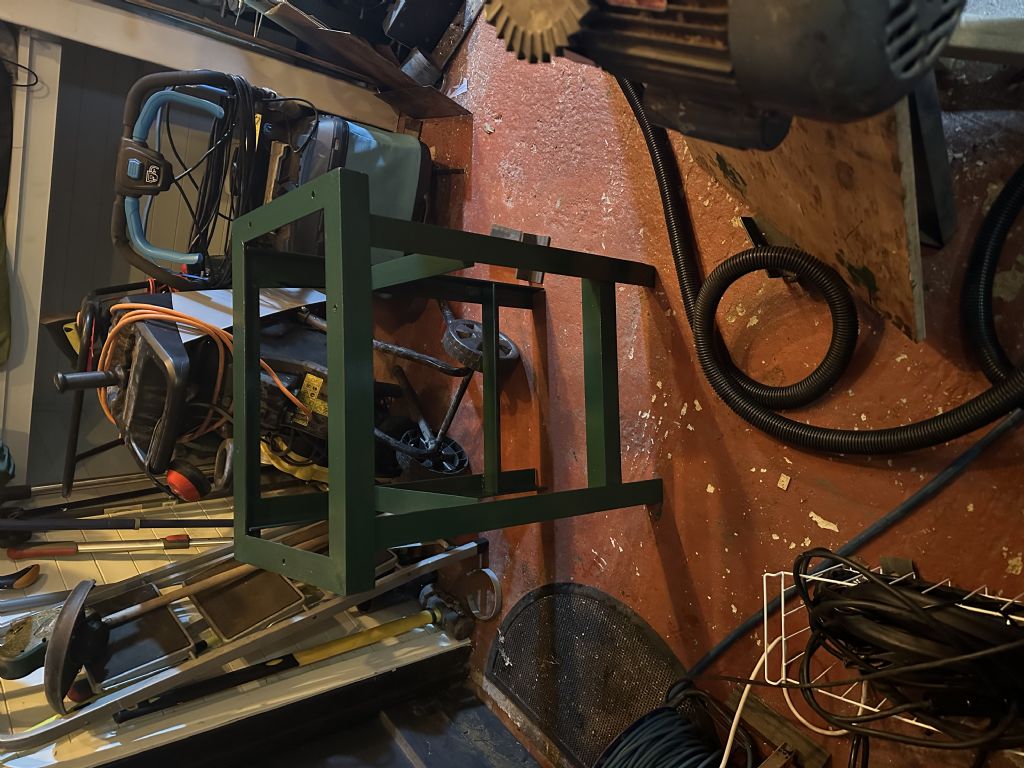A great deal depends on how accurate the surface plate needs to be. I'm at the lowest possible end: I don't own a surface plate at all, instead making occasional use of a pane of float glass plonked on my moderately sturdy bench. The problem is any weight placed on the pane and bench causes both of them to bend, so my surface isn't very trustworthy. But it's 'good enough' for my needs, at least so far.
Next step up would be to buy a small granite or cast-iron plate, probably new, and use that on my bench. Now I'm getting serious enough to worry that a second-hand plate has a bad history, and they are all untrustworthy unless calibrated. Calibration may not matter – for many amateur purposes, a sub-standard plate would be 'good-enough' because we work to relatively low accuracy, ±0.02mm, about a thou or worse. If so, any reasonably stiff unbending stand and a sub-standard plate in reasonable nick would do the job.
An ordinary practical approach isn't good enough if the full accuracy of a surface plate is really needed by the owner. Commercial surface plate stands are expensive because they're carefully made to support the plate accurately and not flex under load. The picture, pinched from Eley Metrology, shows a typical example:

It features a stiff stubby box-section construction (not angle-iron); levelling jacks; three pad mounting; and the blurb says the thing is made to close tolerances. As stands go they are particularly well-made, but this is for high-end measuring and may not be strictly necessary.
How good the stand needs to be depends on the accuracy required of the surface plate. In my case, not much, but a tool-room making jigs, fixtures and gauges needs considerably better, and a metrologist would go to extremes.
I think for most amateur purposes any reasonably sturdy frame will do unless one is doing something special. Therefore the jacks could be made from ordinary bolts, preferably fine threaded. Again, how accurately does the plate need to be levelled? My pane of glass isn't levelled at all. An ordinary builders level isn't sensitive enough to show jacking errors caused by bolt thread inaccuracies, but an engineering level would be easier to adjust with proper jacks with accurate square or buttress threads.
Metrology is 'quite interesting' because it gets exponentially harder to achieve improvements. Easy to measure to about 1mm, 0.1mm requires a coarse tool, 0.02mm is about the limit of ordinary engineering, and 0.001mm or better requires special equipment and precautions.
Dave
Sakura.







